Hella Jongerius creates Colour Machine installation inside CasaVitra
Milan 2016: Dutch designer Hella Jongerius has arranged pieces of Vitra furniture by shade to create a rainbow-hued installation displaying the brand's colour and material library (+ slideshow).
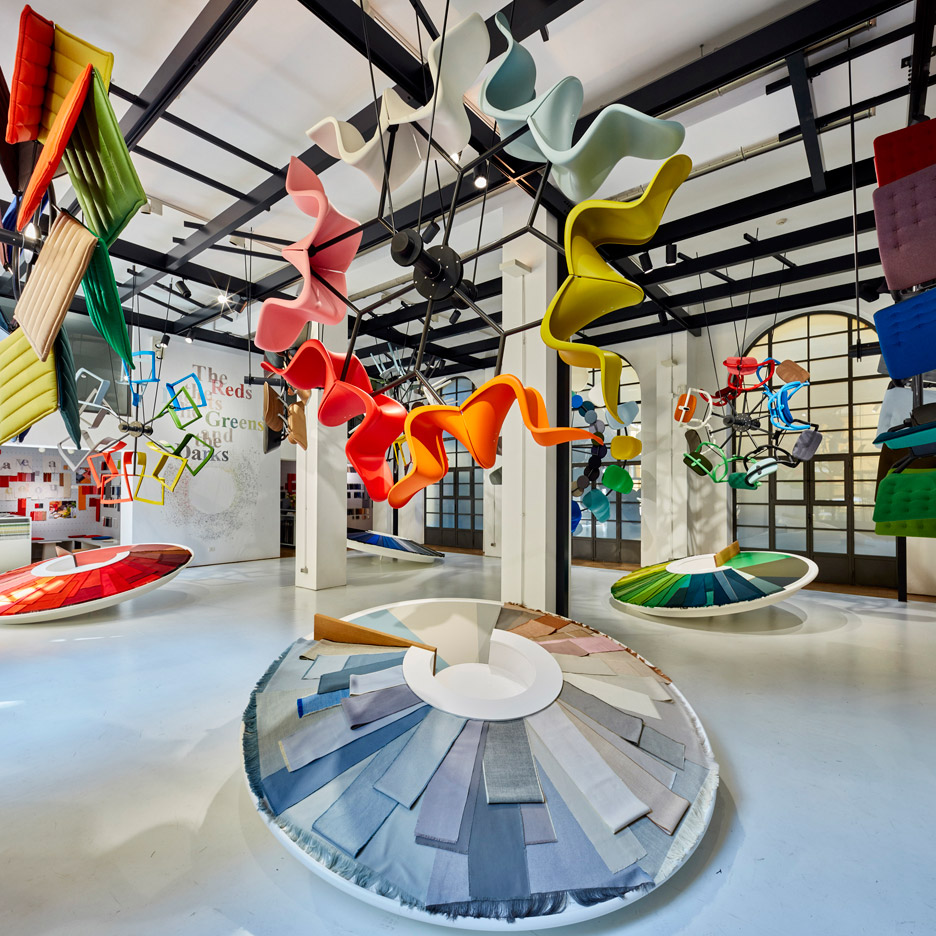
Jongerius designed the Colour Machine installation for the temporary CasaVitra location near Milan's Corso Como, with the aim of bringing the company's archive of colours and materials to life.
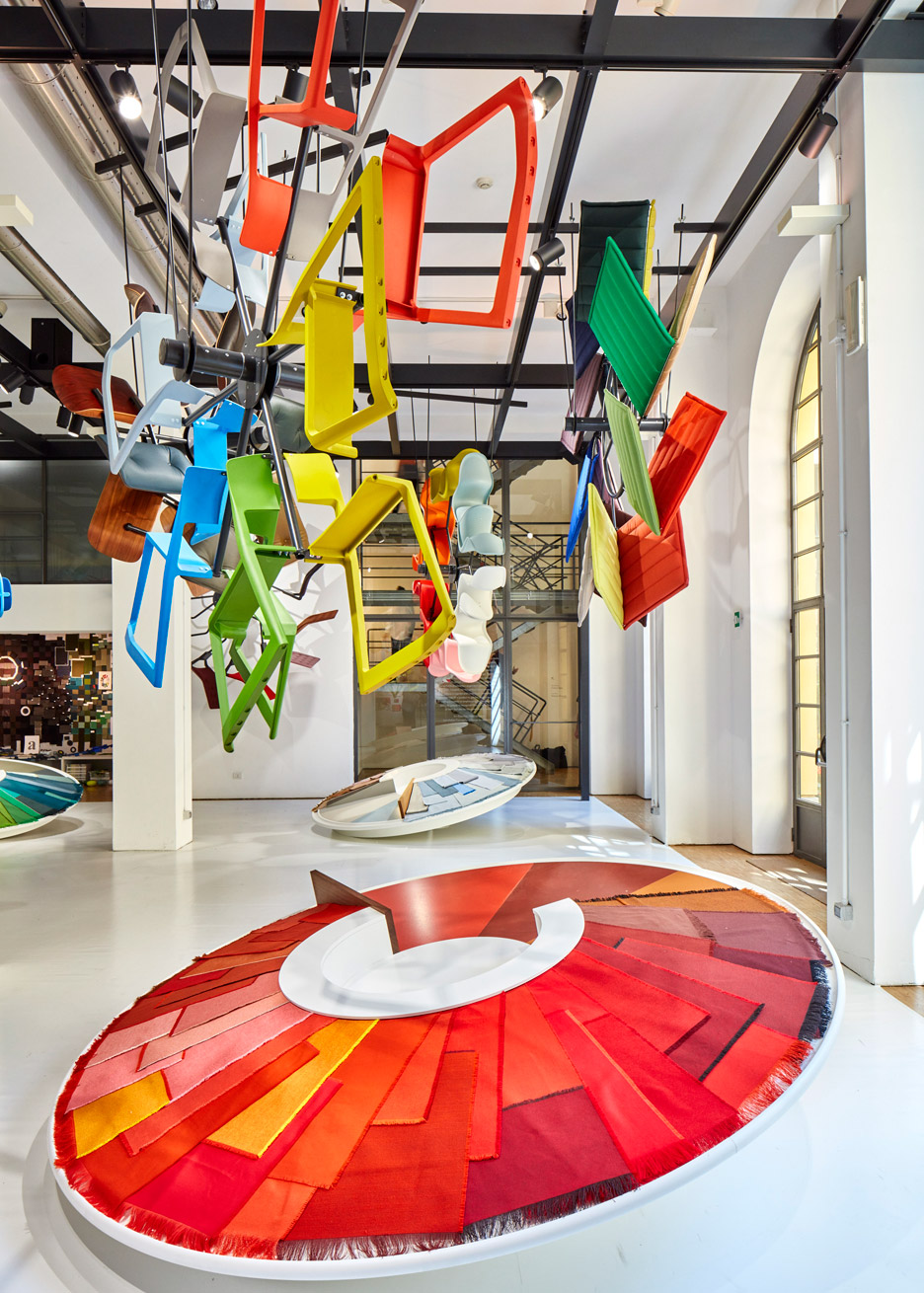
"The concept of the Vitra Colour & Material Library starts with organising all colours in four contrasting colour worlds: the reds, the lights, the greens and the darks," said Jongerius, who has been Vitra's art director for colours and materials since 2007.
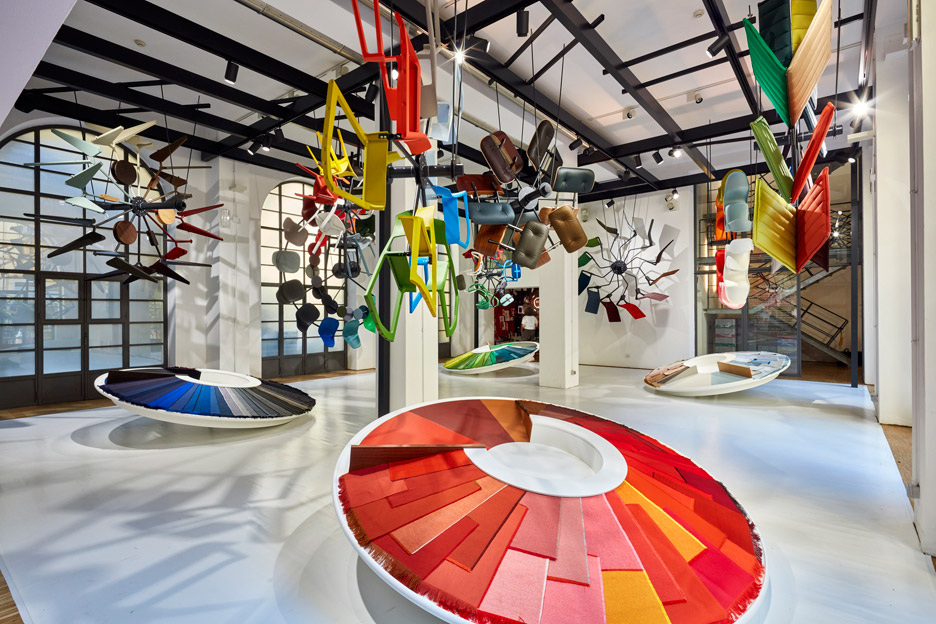
"The library is like a living and growing organism – no colour is static, everything is open to change," she continued. "The internal structure of the colour wheels keeps many options open."
Four giant spinning tops twirling on the floor were used to present the full range of the Swiss brand's materials in four categories: light colours, dark colours, greens and reds.
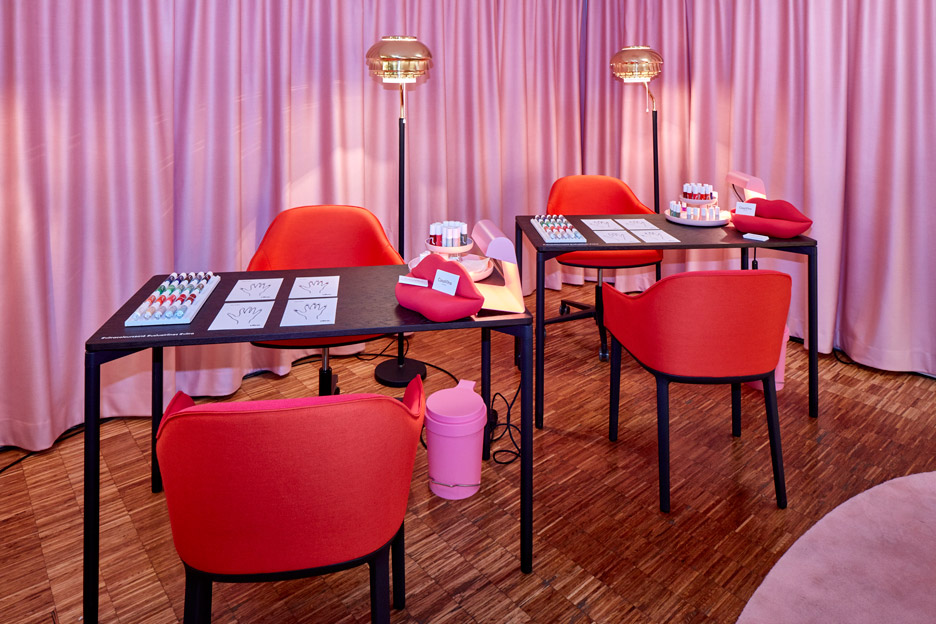
Nine revolving colour wheels suspended above the space were each made from parts of contemporary and classic Vitra furniture pieces, including the base of the EM Table by French architect Jean Prouvé or the Plastic Chair by designers Charles and Ray Eames.
Jongerius' installation is the result of a long-term project in collaboration with the Swiss company aiming to study the properties and possibilities of the colours, textures, finishes and materials in its product portfolio.
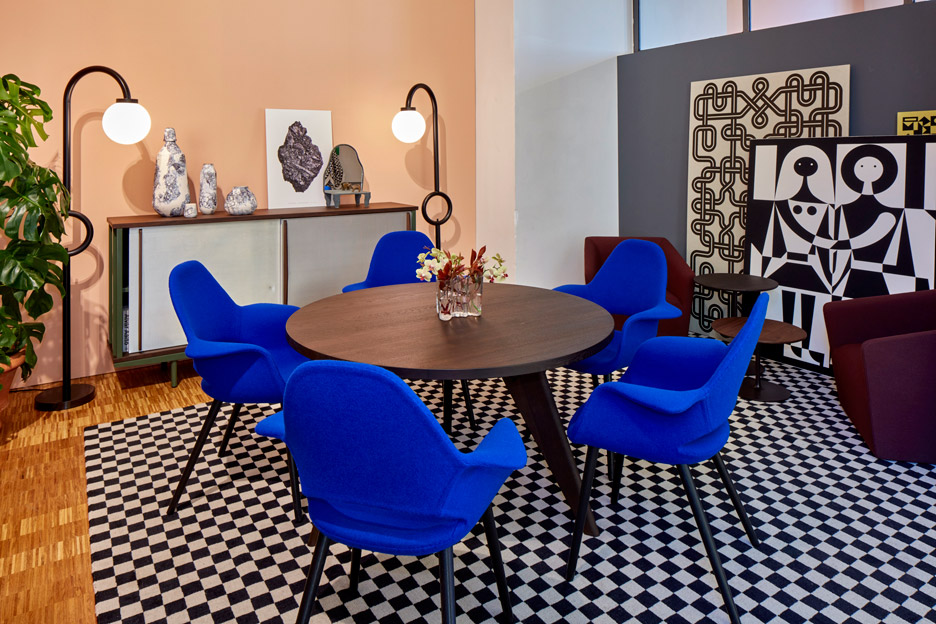
The idea is to use this information to help the brand refresh its existing ranges, instead of just finding new designs to put into production.
"The goal of the joint project is to establish an intelligent system that makes it easy to create rich environments in offices, homes or public spaces," said Vitra's chief design officer Eckart Maise.
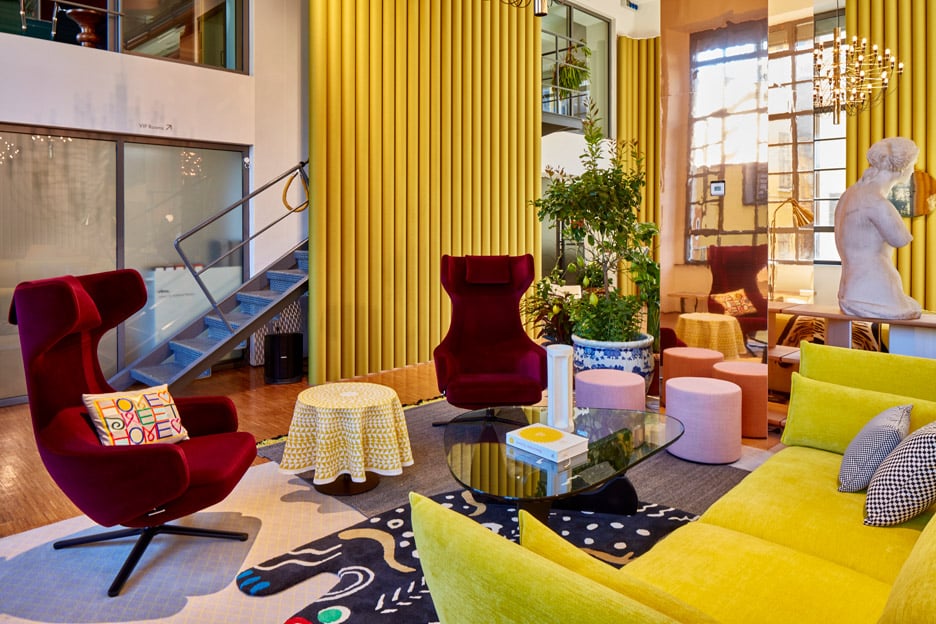
"In a multi-year project, hundreds of new references were created and applied to Vitra's wide product range," he continued. "Product by product, a dialogue with the designers, product management and technical teams has resulted in a process of designing, prototyping and finally defining new or updated versions full of life and energy."
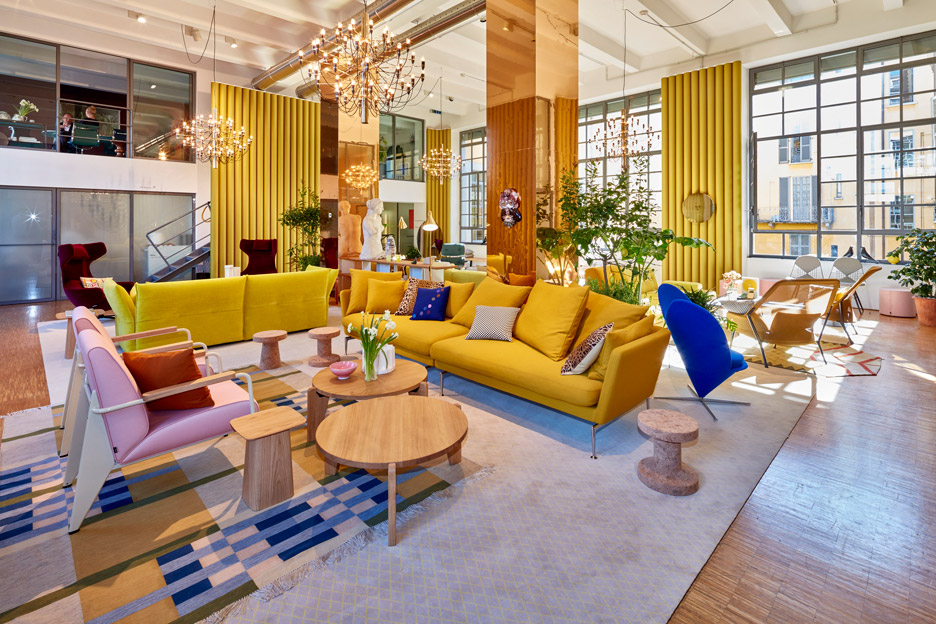
Jongerius is widely recognised as one of the world's most influential female designers. She founded her studio Jongeriuslab in Rotterdam in 1993 after studying at Design Academy Eindhoven, and relocated to Berlin in 2008 – she told Dezeen the move was based on her need for a fresh start.
Last year, Jongerius launched a manifesto calling for an end to "pointless products, commercial hypes and empty rhetoric" in design.
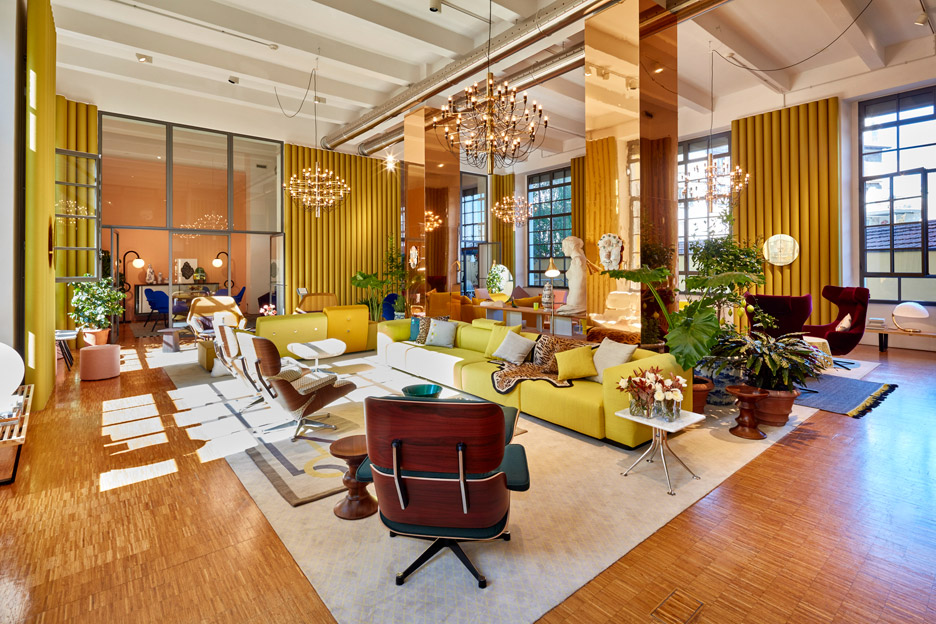
In a 2013 interview with Dezeen – which features in our Dezeen Book of Interviews – she explained that she prefers to work on updating existing designs rather than creating more and more new objects.
"Vitra have great stuff," she said. "Why do they need me to create another piece of furniture? They need me on another level."
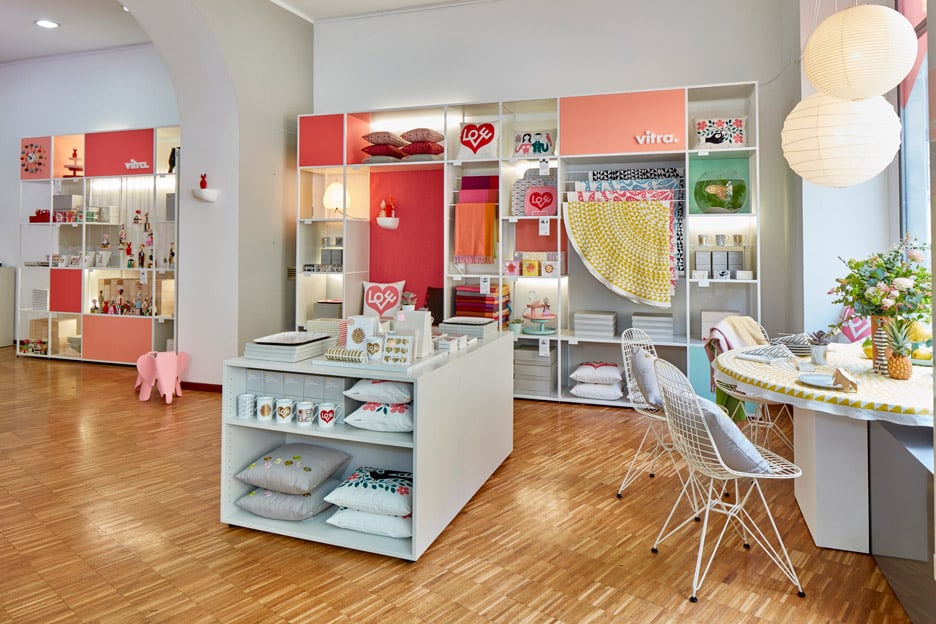
She said that many companies were resistant to the idea of using new colours and textiles.
"[The colours manufacturers use] only come from a certain scheme in the whole colour world: colours that do not change due to daylight," she said. "That's what they think consumers want, colours that stay the same from morning to the evening and I think that's really a mistake."
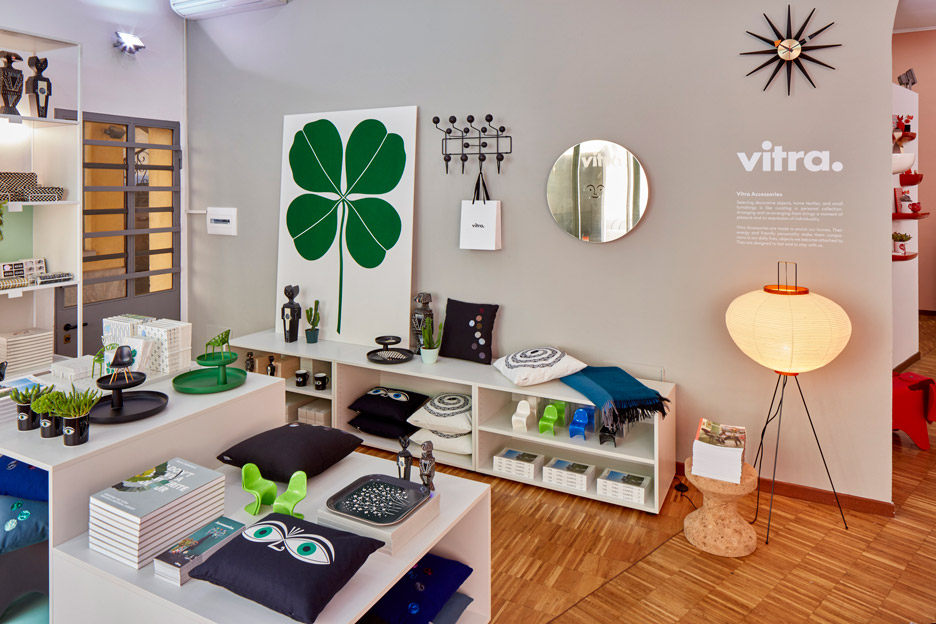
Her new versions of Modernist Alvar Aalto's iconic 901 tea trolley for Finnish furniture brand Artek are a recent example of this approach, as is the updated version of her iconic Polder sofa for Vitra.
Her work with colour and textiles also led to her appointment as design director of textile brand Danskina, which was acquired in 2011 by Kvadrat.
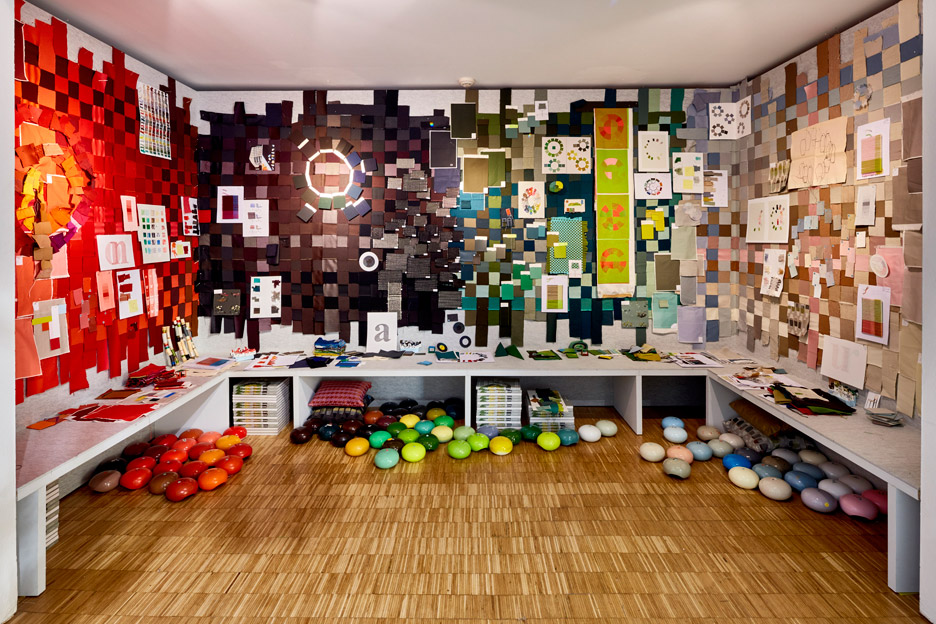
Jongerius' Colour Machine installation was on show from 12 to 17 April at the temporary CasaVitra space near Milan's Corso Como as part of Milan design week.
Other installations taking place across the city included a forest of lights by Sou Fujimoto for fashion brand COS, and collection of chairs influenced by comic books by Nendo on show inside the courtyard of a historic Milanese cloister.